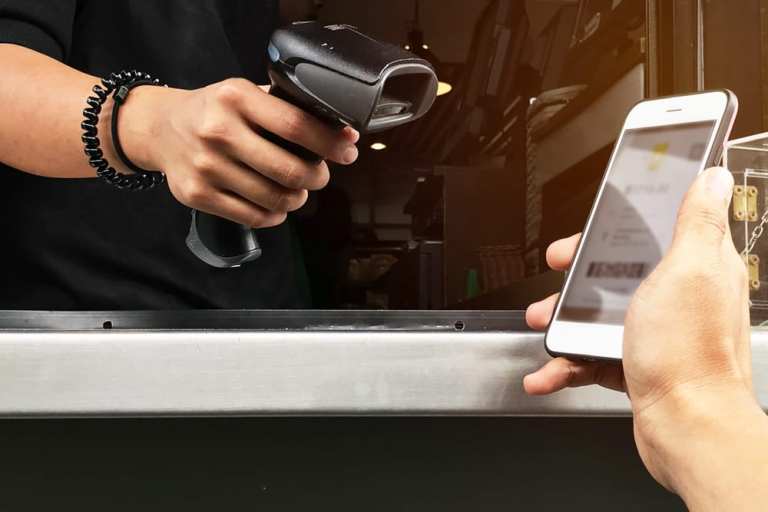
Visa and Marqeta are teaming to ease global expansion of FinTech firms and digital card issuance in Asia-Pacific. Matt Dill, Visa’s global head of strategic partnerships and venture, tells Karen Webster why streamlining digital credentials is the next step in payments enablement and moving beyond domestic markets.
The drive to become a “borderless business” has its challenges. Many of them are technical in nature, as firms — especially FinTech firms and traditional financial institutions (FIs) that want to bring digital payments to new markets — must navigate new relationships with multiple payment processors on a market-by-market basis to gain that acceptance.
To streamline the task, Visa and Marqeta said on Monday (Oct. 28) that they are tackling that challenge head on and solving the FinTech acceptance problem in an entirely new way across 10 key markets in the Asia-Pacific region. FinTech firms with domestic wallets there can now turn user account balances into digital card credentials that are accepted everywhere Visa is accepted, and where the Marqeta platform is certified. The countries include Australia, Hong Kong, Japan, Malaysia, New Zealand, Philippines, Singapore, Taiwan, Thailand and Vietnam.
This new partnership means that FinTech and other firms that wish to enter this market can enable new payment offerings for consumers and small businesses through a streamlined developer path. Developer and FinTech partners can access Marqeta’s existing sandbox and publicly available APIs to test the products in Marqeta’s live sandbox. The solution also allows partners to work on user interfaces to trial a number of different payment solutions.
“We’re moving into the next step of payments enablement,” Matt Dill, Visa’s global head of strategic partnerships and venture, told Karen Webster in an interview.
It’s a step, Dill emphasized, that helps these FinTech firms seize four new opportunities: gaining access to new users; adding and/or accelerating the pace of transactions; accessing and promoting new credit models; and capitalizing on new payment flows.
New Markets And New Users
Against that backdrop, domestic use cases truly become global, allowing eWallet players to gain acceptance across a variety of endpoints, marketplaces and merchants. As a result, Dill said, digital commerce will find footing in Asian markets that have, thus far, been underpenetrated — with good reason.
Asia, of course, is fertile ground for digital payments, with as many as 90 digital wallets on offer, and 150 pending or extant digital banking licenses in place. This region, home to more than 4.3 billion people, is expected to increase the volume of digital transactions by $23 trillion through the next decade.
Before today, he told Webster, FinTech firms with ambitions to scale beyond their own domestic markets in South Asia were forced to seek out and integrate with a stack of three or four different processors — at a minimum — to get acceptance for their digital wallets.
Payment Flows
The goal of advancing digital payments — inbound and outbound across markets, and across use cases where individuals are both sending and receiving money — comes as Visa has announced partnerships in the region, including those with Razer Fintech, Gojek, Revolut and others. Dill predicted that the Marqeta relationship will help both Visa Direct and the Earthport acquisition become even more important as digital credentials spread to more places, such as in emerging economies like Vietnam.
He said there is a need for Visa to boost the infrastructure that underpins the larger platform players to tap into underserved populations. The more credentials there are in place at a greater range of locations, he explained, the more digital transactions will flow.
To expand effectively across those new markets, he told Webster, “you have to be able to move into new consumption scenarios,” wherever they may be. Many countries are in, what he termed, the first inning of digital interactions — a game that is most definitely going to include digital card credentials, particularly in markets where many have said traditional card networks are disadvantaged and can’t play.
In a digital world, and when expanding out of domestic markets into global commerce ecosystems, Dill explained that it’s not in the interest of any platform to ignore the opportunity to add the capability of turning an existing account balance into a global card credential — if that’s what its users want.
“It’s unlikely that many will say ‘I’m going to fight it out, and not have a global credential,’” he said.
Expanding Credit Models
Beyond gaining new users, and boosting the number of transactions, Dill said new payment consumption scenarios offer the potential to change the way credit is applied for and granted through these FinTech firms, including via installment payments.
At some point, Dill said, giving these FinTech firms more of an opportunity to aggregate and scale use cases and payment options will ultimately rationalize the tens of dozens of wallets in the field. After all, many platforms and firms have had to build wallet functionality to hold funds, and encourage consumption around specific narrow use cases. Though there will always be room for consumers to wield multiple wallets across daily life, especially if not confined to certain markets or use cases, FinTech firms and consumers will have the option to consolidate those activities to the digital wallet provider that best suits their needs.
“A lot of these companies started by building a domestic [use case], where cards or other types of digital credentials were underpenetrated. Now that they are associated with a global platform, they can really extend their revenue reach,” he told Webster, adding “there will be concentric circles of growth.”